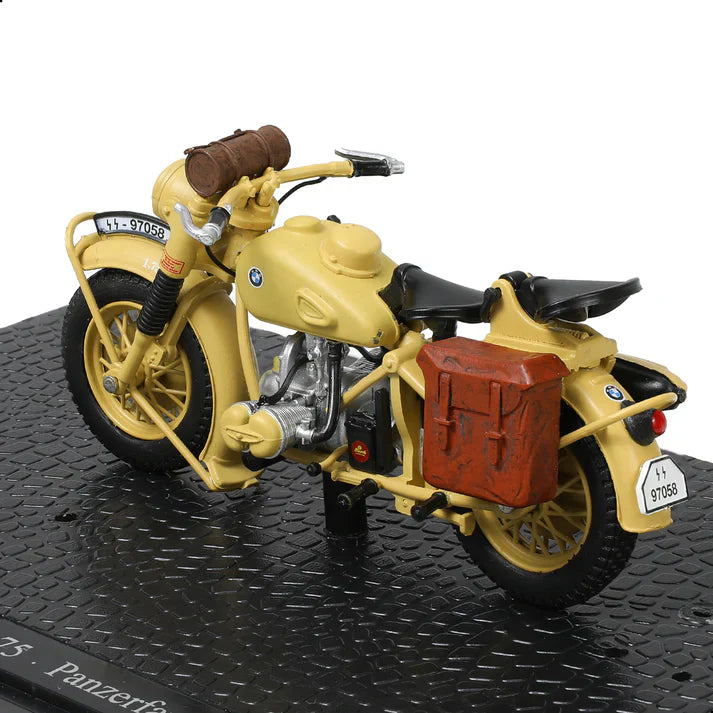In the smoke of World War II, the German BMW R75 sidecar motorcycle, with its exceptional performance and versatility, became an indispensable means of transportation on the German battlefield. This motorcycle not only played an important role in reconnaissance, communication, and transportation missions, but was also used in direct combat operations in some cases.
Design and Performance
The design of the BMW R75 began in the late 1930s with the aim of providing the German army with a motorcycle that could travel in various terrain conditions. It is equipped with a 750cc horizontally opposed twin-cylinder engine that can provide 26 horsepower of power. This power output allows the R75 to travel on rugged terrain, and even maintain good trafficability on desert and muddy roads.
The most notable feature of the R75 is its sidecar design. The sidecar can not only carry a soldier, but also be equipped with various weapons, such as an MG34 machine gun or an MP40 submachine gun. In addition, the R75 is also equipped with a differential lock and reverse gear, which were very advanced technologies at the time, greatly improving its maneuverability in complex terrain.
Applications on the Battlefield
During World War II, the BMW R75 was widely used in various battlefields. It mainly undertakes the following tasks:
- Reconnaissance: The R75's high maneuverability and off-road capability make it an ideal reconnaissance tool. German scouts often drive R75 deep behind enemy lines to collect intelligence and carry out reconnaissance missions.
- Communication: The R75 is also used to transmit information and orders. Its rapid mobility allows German commanders to quickly convey orders to front-line troops.
- Transportation: The R75's sidecar can be used to transport personnel and supplies. In some cases, it was even used to tow light artillery.
- Combat: Although the R75 is mainly used for non-combat missions, it is also used in direct combat operations in some cases. For example, on the Eastern Front, the R75 was often used for rapid assaults and flanking maneuvers.
Synergy with "Panzerfaust 30"
In the later stages of the war, as the Allied armored forces strengthened, the German army began to seek various anti-tank means. "Panzerfaust 30" is one of them. This individual anti-tank weapon is light and portable, and can effectively destroy enemy tanks at close range. In some cases, the BMW R75 was used as a transport vehicle for the "Panzerfaust 30," allowing German soldiers to quickly deploy this weapon to key positions on the battlefield.
Historical Significance
The BMW R75 is one of the most famous military motorcycles of World War II. Its superior performance and versatility made it an indispensable piece of equipment on the German battlefield. Even today, the R75 is still sought after by many military enthusiasts and collectors.

